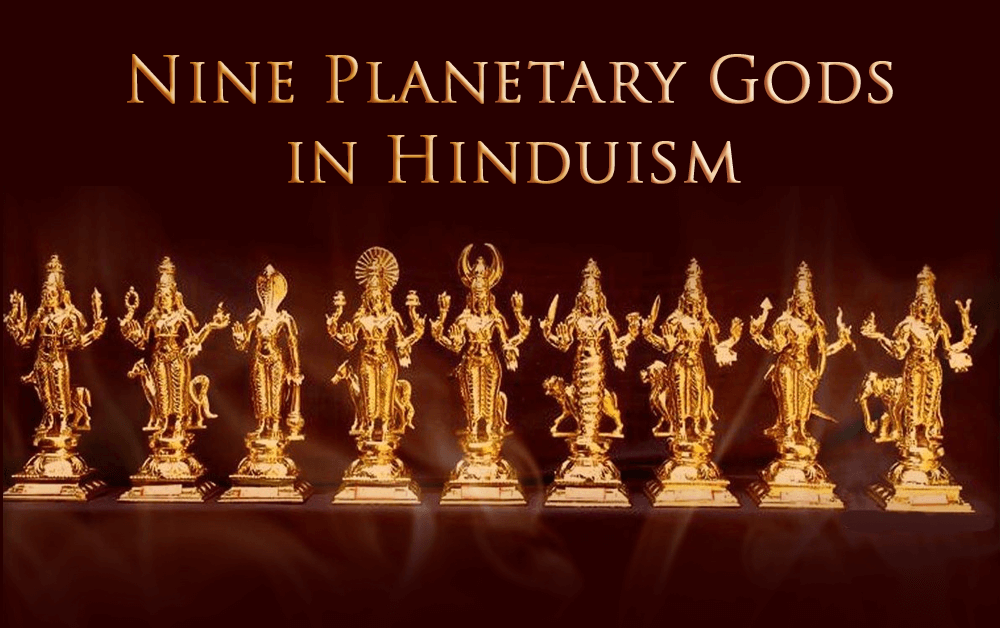Nine Planetary Gods in Hinduism

According to ancient theory of earth, the entire universe is made up of five basic elements known as Panchabhuta or Pancha maha bhuta. Prithvi (Earth), Jala (Water), Agni (Fire), Vayu (Air) and Akash (Space) are the five elements. These five elements are connected to five sense organs in human body because panchabhutas are emerged from Pancha Tanmatra namely Shabda (Sound), Sparsha (Touch), Roopa (Vision), Rasa(Taste) and Gandha(Smell). The combination of these five elements in human body is demonstrated as three doshas such as Vata, Kapha and Pitta. Ayurveda explaining that elements of human body is connected with elements of nature. The following are the characteristics of five elements. Prithvi or earth is the first element. Earth is divided into two types as Eternal or Nitya and Perishable or Anitya. Nitya is in the mode of atom or paramanu and Anitya is in the mode of karya. Sense organs in our human body has the shape of Jiva but those are perishable. Atoms are eternal and after death our body may bury or burn, nevertheless atoms are come back to it's eternal form. Tanmatra for prithvi is Gandha. Water or jala is the second element. Tanmatra for jala is Rasa because in our human body sense of taste is depends on water in the mouth. Water is the quality of binding in nature. The third element is Fire or agni. Tanmatra for agni is Rupa. Agni is treated as mouth of Gods and Goddess and the main witness for all rituals such as hindu wedding. Agni is existing in earth as fire, in atmosphere as lightning and in sky as sun. The fourth element is Air or vayu. Tanmatra for vayu is Sparsha. It is unstable and vayu explicits movement. Space or vayu is the fifth and last element in Panchabhuta. Shabda is the tanmatra for Akash and it is clear and light. The main peculiarity of Akash is non resistance and it is associated with expansion and vibration.
Get weekly updates on the newest articles, quotes and newsletters right in your mailbox. Subscribe now
